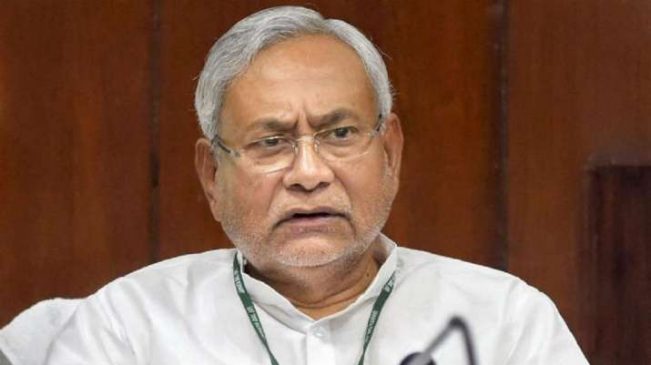In politics, timing is of crucial significance. So when the Nitish Kumar government last week cited administrative reasons to extend the deadline for the Bihar caste census report by three months—from the scheduled February 2023—there seemed more to it than met the eye.
Significantly, the new May 2023 deadline means the results of the caste count would be out just about a year before the Lok Sabha polls. And, in case of another extension, which may well be probable, the social churn the caste count is expected to generate in Bihar could hit the peak of momentum at the time of Lok Sabha polls.
And if this happens, Nitish and Tejashwi Yadav, the two strongest supporters of the caste count in Bihar, may also emerge as the biggest political beneficiaries of the exercise. There is a strong understanding that the caste count exercise may foreground the caste narrative over the Hindutva one, making the ‘Mandal’ forces prominent again over the ‘Kamandal’ appeal.
The common perception is that owing to its strong leadership appeal, the BJP stands taller over the caste-sensitive parties, including the Janata Dal (United) or JD(U) and Rashtriya Janata Dal (RJD), when it comes to general elections. The seemingly strong caste alliance that the Opposition cobbled up in Bihar and Uttar Pradesh had failed to stop the BJP in the 2019 Lok Sabha polls, in which the National Democratic Alliance (NDA) won 39 of Bihar’s 40 Lok Sabha seats. The Tejashwi-led RJD had drawn a blank despite seeking to bring together Yadavs, Muslims, a section of Dalits and Kushwaha voters.
While the BJP may have been benefited from its mascot, Prime Minister Narendra Modi, in 2019, it also neutralised the Opposition’s caste alliance by mobilising a much varied and larger caste coalition of non-Yadav backward castes. Similarly, many caste groups have been known to back the BJP because of their Hindutva appeal. According to a senior JD(U) leader, while the BJP can still bag the votes of their committed caste groups, the caste census can create a much polarised Bihar, thereby significantly weakening the crowd under the Hindutva umbrella.
What further adds significance to the three-month extension is Nitish’s reputation for holding his cards close to his chest and revealing them at moments of his own choosing. The element of surprise has always been his weapon, as was evident when the JD(U) dumped the BJP in Bihar just three days after his party had voted in favour of NDA vice-presidential candidate Jagdeep Dhankhar.
Having spoken openly about the idea of doing away with the 50 per cent cap on total reservation in the country, Nitish has clearly linked the caste count to employment opportunities. Nitish has explained that the caste census will provide a verified quantifiable data on castes and thereby allow the government to expand the caste-based affirmative action programmes.
Now, there are two clear assumptions derived—the caste count will ensure that the largest social group will get the maximum government benefits in sync with the idea of proportional distribution of state-provided assistance. Second, which is less subtle and even less spoken, is that if the biggest beneficiaries (largest social groups) get an opportunity for an electoral payback, they may opt for their benefactors over others. Again, this can be advantageous to Nitish.
Though Nitish and Tejashwi continue to be popular with an unassailable numerical strength of their parties in the Bihar assembly, a caste-based census may help them dominate the political narrative in the state during the Lok Sabha polls. The two leaders could be hoping that a caste-based count can retrieve their earlier leadership position in Bihar to the detriment of BJP even in the national elections.
Without Nitish in its bloc, the BJP’s plan in Bihar is to wean away the captive vote banks of both the JD(U) and RJD in order to install someone from saffron ranks as the chief minister in the 2025 elections. But many believe this can only happen if Bihar’s caste-based consolidation is replaced by a ‘Hindutva-development’ narrative, which would subsume caste. But the upcoming caste count and its resultant consolidation may topple the BJP’s plan.
However, the caste census and the social churn it can create can also spring a surprise. It can also be a double-edged sword. Given the intangibles involved, the caste census process and result can throw up new caste consolidations or strengthen or weaken the old social order. If society is already in a churn, the caste census can deepen it further.
In fact, there are multiple arguments in favour of supporting the headcount. The last census to record caste was conducted in 1931, and the Mandal Commission’s determination that OBCs accounted for 52 per cent of India’s population was largely derived from that figure. It is not clear if this 52 per cent figure remains accurate anymore. Is it more or less? And is any particular influential caste bagging disproportionate benefits of the reservation? Only a caste-based census can answer these questions. So there can be benefits for the people but what makes it even more interesting is that top political players are not talking about how it can benefit them as well.





































